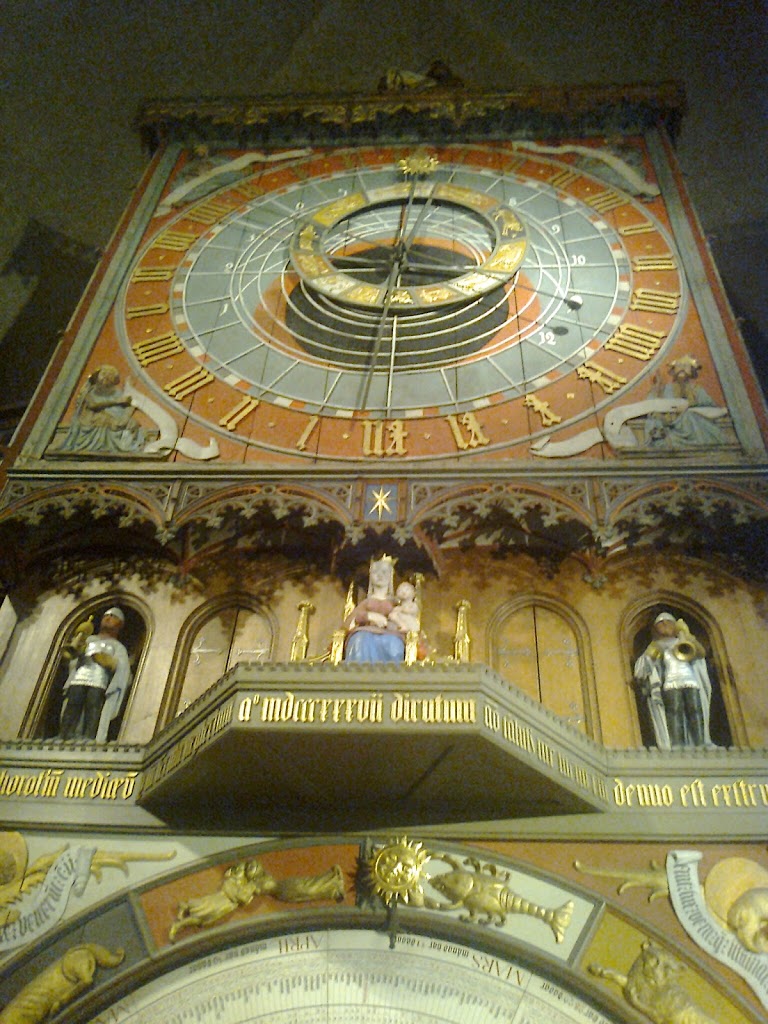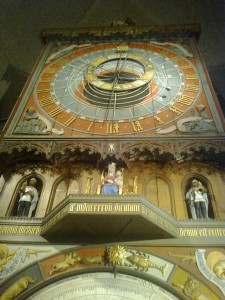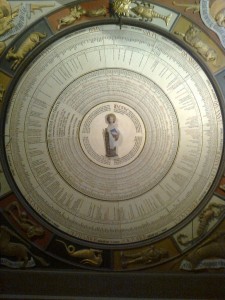
“I can easily conceive, most Holy Father,
that as soon as some people learn that in this book
which I have written concerning the revolutions of the heavenly bodies,
I ascribe certain motions to the earth,
they will cry out at once that I and my theory should be rejected.”
that as soon as some people learn that in this book
which I have written concerning the revolutions of the heavenly bodies,
I ascribe certain motions to the earth,
they will cry out at once that I and my theory should be rejected.”
“At rest , however, in the middle of everything is the sun.”
Nicolaus Copernicus
(1473 – 1543)
Nicolaus Copernicus
(1473 – 1543)
The astronomical clock of Lund Cathedral, Lund, Sweden, the Horologium mirabile Lundense, was constructed c. 1380. After having been in storage since 1837, it was restored and put back in place in 1923. On top of the clock there are two knights that mark the hours. The upper board of the clock is the astronomical clock. It shows, among other things, the different phases of the Moon and where the Sun sets.
The lower board of the clock is a calendar. With the help of it one can, among other things, calculate when different mobile religious holidays will fall and on which weekday a certain date will fall. In the middle of the calendar stands Saint Lawrence, the Patron Saint of the Cathedral, and by his side the Symbols of the Four Evangelists.
The present board of the clock goes from 1923 to 2123, after that a new one must be obtained so that the clock can be used. The Earth is not the center of the universe.
Nicolaus Copernicus (1473 – 1543) was a Renaissance astronomer who formulated a heliocentric model of the Universe which placed the Sun, rather than the Earth, at the center.
Nicolaus Copernicus (1473 – 1543) was a Renaissance astronomer who formulated a heliocentric model of the Universe which placed the Sun, rather than the Earth, at the center.
When Copernicus proposed that the Earth and other planets orbit the Sun, his contemporaries found his theories absurd. It would take several generations to sink in. Very few scholars saw it as a real description of the universe.
Galileo Galilei (1564 – 1642) used a telescope to provide evidence for the heliocentric theory, and some of his contemporaries were so disturbed by what the new invention revealed (craters on a supposedly perfectly spherical moon, other moons circling Jupiter) that they refused to look through the device. More dangerous than defying common sense, though, was Galileo’s defiance of the Catholic Church. Scripture said that the Sun revolved around the Earth, and the Holy Office of the Inquisition found Galileo guilty of heresy for saying otherwise.





